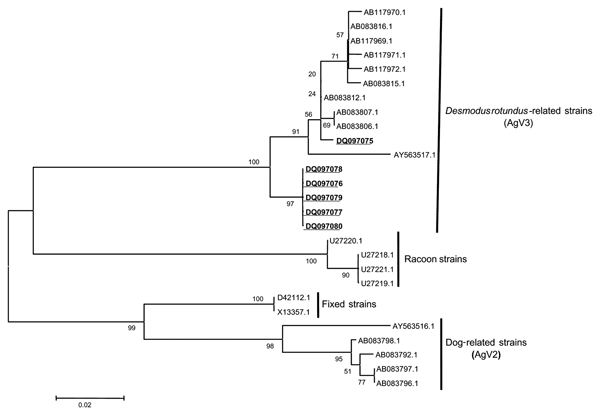Volume 12, Number 8—August 2006
Research
Bat-transmitted Human Rabies Outbreaks, Brazilian Amazon
Figure 2

Figure 2. Neighbor-joining tree with K2P model based on partial nucleoprotein gene sequences of rabies virus from Desmodus rotundus AgV3, raccoons, fixed strains, and dog AgV2. Each taxon is represented by its respective GenBank accession number (human strains from the present study are in bold and underlined). Numbers at each node are 1,000 bootstrap replicate values; the bar indicates genetic distance.
Page created: December 09, 2011
Page updated: December 09, 2011
Page reviewed: December 09, 2011
The conclusions, findings, and opinions expressed by authors contributing to this journal do not necessarily reflect the official position of the U.S. Department of Health and Human Services, the Public Health Service, the Centers for Disease Control and Prevention, or the authors' affiliated institutions. Use of trade names is for identification only and does not imply endorsement by any of the groups named above.